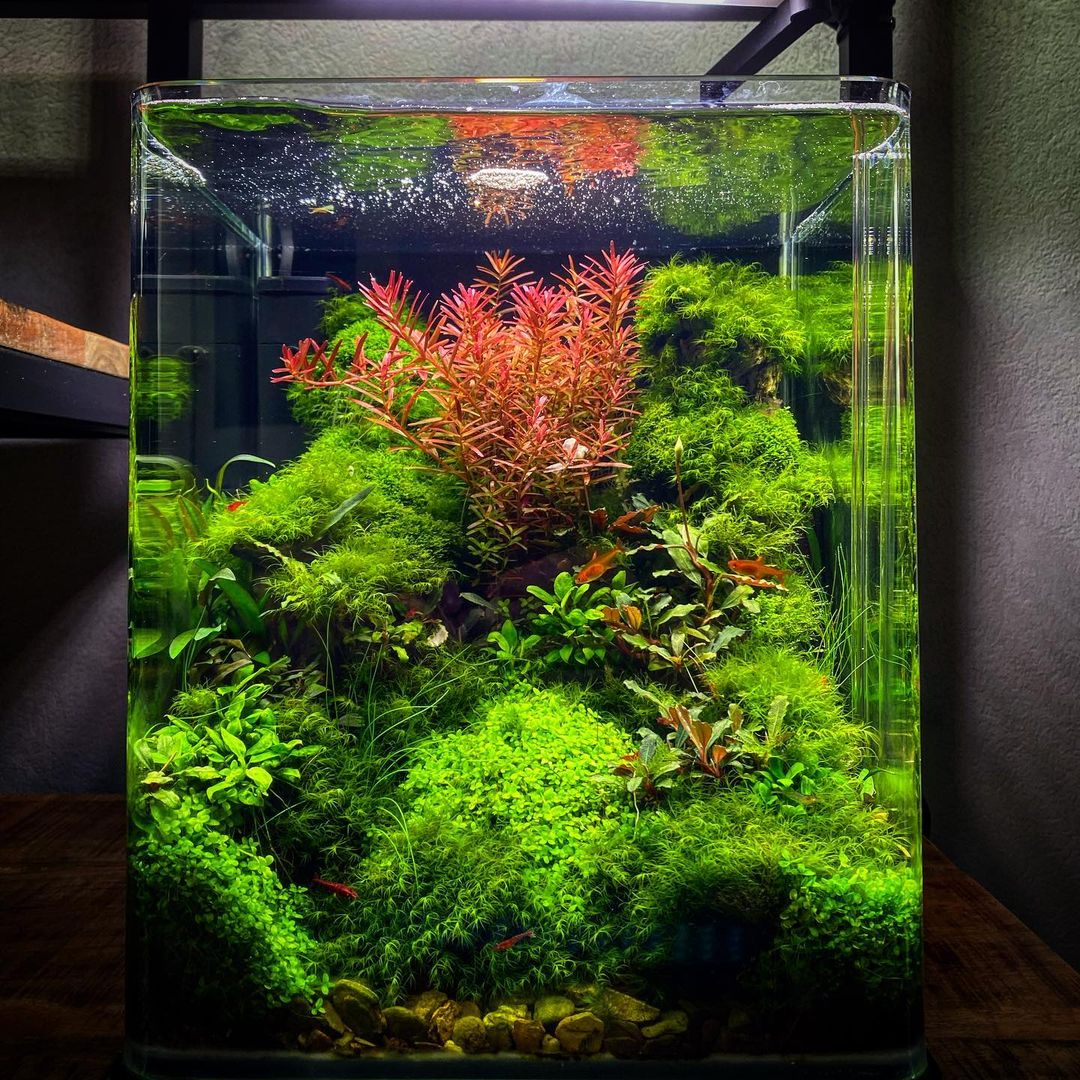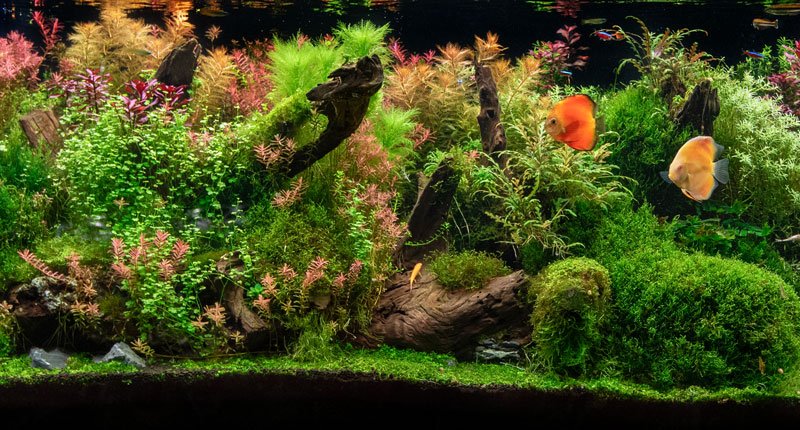Here’s how to set up a fish tank for beginners: Rinse out dust, install tank background, place tank on stand, add substrate, place filter and heater, add decorations to hide equipment, fill with water, and dose dechlorinator. In addition to the aquarium, filter, and lighting, you’ll also need gravel, decorations, and water conditioner to get started.
Coated or pre-washed gravel is ideal, and make sure any decorations are designated for aquarium use. Use a water conditioner that dechlorinates tap water to make it safe for fish. With these essentials, you’ll be on your way to successful fishkeeping.

Credit: www.youtube.com
Why Set Up A Fish Tank?
Setting up a fish tank can be a rewarding experience for beginners. Learn how to rinse, install, and decorate your tank, as well as properly fill it with water and add necessary equipment like filters and heaters. A complete guide to help you get started on your fishkeeping journey.
If you’re new to the world of fishkeeping, setting up a fish tank might seem like a daunting task. However, the rewards of having a fish tank in your home are well worth the effort. Not only do fish tanks provide a beautiful and calming aesthetic, but they also offer several benefits for beginners.
Benefits Of Having A Fish Tank
Relaxation and Stress Relief
One of the key benefits of having a fish tank is the relaxation and stress relief it provides. Watching fish gracefully swim through the water can have a soothing effect on your mind and body. The gentle movement and vibrant colors of the fish can help to reduce anxiety and promote a sense of calmness after a long, stressful day.
Education and Learning
Another great advantage of setting up a fish tank is the educational opportunity it presents, especially for beginners. Fish tanks can become a mini ecosystem, allowing you to observe and learn about the behaviors and interactions of the fish. This hands-on experience can teach you about aquatic life, water chemistry, and the delicate balance required to maintain a healthy environment for your fish.
Decorative Element
A fish tank not only serves as a fascinating hobby but also adds a decorative element to your home. With a wide variety of tank sizes, shapes, and styles available on the market, you can choose one that complements the aesthetics of your living space. Additionally, you can personalize your fish tank with plants, rocks, and other decorative elements to create a visually pleasing and unique focal point in any room.
Choosing The Right Tank
Setting up a fish tank for beginners can be overwhelming, but by following a few simple steps, you can ensure that you choose the right tank and set it up correctly. Rinse the tank and accessories, add substrate and decorations, install the filter and heater, and fill the tank with water treated with a dechlorinator.
With this complete guide, you’ll have everything you need to create a suitable environment for your fish.
When setting up a fish tank, one of the most important factors to consider is choosing the right tank. The tank you choose will not only impact the overall look and aesthetic appeal of your aquarium but also the well-being of your fish. Here are some key considerations when it comes to selecting the perfect tank:
Size And Capacity
First and foremost, determine the appropriate size and capacity for your fish tank. The size of the tank will depend on the number and type of fish you plan to keep. It’s crucial to provide enough space for the fish to swim freely and comfortably. Additionally, consider the future growth of your fish and ensure that the tank will accommodate their size as they mature. As a general rule of thumb, a larger tank is always better than a smaller one.
Glass Vs. Acrylic
Next, decide whether you prefer a glass or acrylic tank. Both materials have their advantages and disadvantages. Glass tanks offer excellent clarity and are scratch-resistant, but they are heavier and more prone to breaking. On the other hand, acrylic tanks are lightweight, impact-resistant, and provide better insulation, but they can be scratched easily. Consider your requirements and choose the material that aligns with your preferences and budget.
Shape And Design
The shape and design of the tank can greatly enhance the visual appeal of your aquarium. There are several options to choose from, including rectangular, cube, bow-front, and cylindrical tanks. Rectangular tanks provide a larger surface area for fish to swim, while bow-front tanks offer a unique curved front display. Consider the space available in your home and choose a tank design that complements the overall aesthetic of your living space.
Accessories And Equipment
Lastly, consider the accessories and equipment that you’ll need to set up your fish tank. This includes a filtration system to maintain water quality, a heater to regulate temperature, and lighting to provide proper illumination. Research about the specific requirements of the fish you plan to keep and invest in the necessary equipment accordingly. Additionally, don’t forget to add substrate, decorations, and plants to create a natural and inviting environment for your fish.
Remember, choosing the right tank is the foundation of a successful aquarium setup. Take the time to carefully consider your options and make an informed decision. By selecting the right size, material, shape, and accessories, you can create a thriving and visually stunning fish tank for your aquatic friends to enjoy.
Setting Up The Tank
To set up a fish tank for beginners, rinse out any dust, install a tank background, place the tank on a stand, add substrate, filter and heater, hide equipment with decorations, fill with water, and dose with dechlorinator. This complete guide provides step-by-step instructions for a successful fish tank setup.
ble or stand that will support the tank. Cleaning and Preparing the Tank is the first step to set up a fish tank for beginners. Ensure the surface of the tank is clean by rinsing out any dust or debris. It’s essential to provide a clean and safe environment for your fish. Installing the Filter and Heater is the next crucial step. Mounting the filter and heater using the manufacturer’s instructions will help maintain the water quality and temperature for your fish. Adding Substrate and Decorations is a fun part of setting up the tank. Choose a suitable substrate, such as gravel or sand, and add it to the bottom of the tank. Decorate the tank with rocks, plants, or other ornaments to create a natural and visually appealing habitat for your fish. Finally, Filling the Tank with Water completes the setup process. Fill the tank with clean, dechlorinated water, making sure to leave enough room at the top for oxygen exchange. Now, your fish tank is ready for the next step, which is to introduce fish into the tank. Remember to research and choose the appropriate fish species for your tank size and water conditions. Follow these steps, and you’ll be well on your way to creating a thriving fish tank for beginners.
Credit: www.bunnycart.com
Creating The Ideal Environment
Create the ideal environment for your fish by following our complete guide on how to set up a fish tank for beginners. Learn step-by-step instructions for rinsing out dust, installing the tank background, adding substrate, placing the filter and heater, and decorating the tank.
Fill with water and dose with dechlorinator for a successful aquarium setup.
Creating the Ideal Environment When it comes to setting up a fish tank for beginners, creating the ideal environment is crucial for the health and well-being of your fish. In this section, we will explore some key factors to consider when creating the perfect home for your underwater friends.Choosing The Right Plants
One important aspect of creating an ideal environment for your fish is choosing the right plants. Live plants not only enhance the aesthetic appeal of your tank but also provide numerous benefits for your fish. They help to improve water quality by absorbing excess nutrients and carbon dioxide, and they provide hiding places for your fish to reduce stress. When selecting plants, consider the specific needs of your fish species and choose plants that can thrive in their preferred water conditions.Water Conditioning And Maintenance
Maintaining proper water conditions is essential for the health of your fish. Before adding water to your fish tank, it is important to condition it to make it safe and suitable for your fish. This involves using a water conditioner to remove harmful chemicals, such as chlorine and chloramines, that can be present in tap water. Additionally, regular maintenance is necessary to keep the water clean and balanced. This includes regular water changes, testing water parameters, and cleaning the tank and filtration system.Establishing The Nitrogen Cycle
One of the most crucial steps in setting up a fish tank is establishing the nitrogen cycle. The nitrogen cycle is a biological process where beneficial bacteria convert toxic ammonia into less harmful nitrites and eventually nitrates. This cycle is crucial for maintaining a healthy environment in your tank. To establish the nitrogen cycle, you will need to start by adding a source of ammonia, such as fish food or ammonia drops, to kick-start the growth of beneficial bacteria. Regular testing of water parameters and monitoring the levels of ammonia, nitrites, and nitrates is necessary to ensure the nitrogen cycle is established and functioning properly.Feeding And Caring For Your Fish
Feeding and caring for your fish is an essential part of maintaining a healthy and thriving fish tank. It is important to provide a balanced diet suitable for the specific needs of your fish species. Overfeeding can lead to water quality issues, so it is crucial to feed your fish the right amount of food and remove any uneaten food promptly. Additionally, regular observation of your fish is necessary to monitor their health and behavior. Look out for signs of illness, stress, or aggression, and address any issues promptly to ensure the well-being of your fish. Creating the ideal environment for your fish involves a combination of factors, including choosing the right plants, maintaining proper water conditions, establishing the nitrogen cycle, and providing proper care and nutrition for your fish. By paying attention to these aspects, you can create a healthy and thriving fish tank that will bring joy and beauty to your home.Common Mistakes To Avoid
Setting up a fish tank for beginners can be an exciting experience. However, there are several common mistakes that beginners often make that can negatively impact the health and well-being of their fish. In order to avoid these mistakes and create a successful and thriving aquarium, it’s important to be aware of the following:
Adding Fish Too Soon
One of the biggest mistakes beginners make is adding fish to their tank too soon. It’s important to allow your tank to establish a stable environment before introducing any fish. This means properly cycling your tank, which involves establishing beneficial bacteria that will help break down harmful ammonia and nitrite in the water. It can take several weeks for this process to occur, so be patient and resist the temptation to rush the process.
Overcrowding The Tank
Another common mistake is overcrowding the tank with too many fish. Overcrowding can lead to poor water quality, increased aggression among fish, and overall stress for the inhabitants of the tank. It’s important to research the specific needs and space requirements of the fish you plan to keep and ensure you provide adequate space for each fish to swim and thrive.
Ignoring Water Parameters
The water parameters in your tank, such as temperature, pH level, and water hardness, play a crucial role in the health and well-being of your fish. Ignoring or neglecting these parameters can lead to stress, disease, and even death in your fish. Invest in a reliable water test kit and regularly monitor and adjust the parameters as needed to maintain a stable and suitable environment for your fish.
Neglecting Regular Maintenance
Regular maintenance is key to a healthy and thriving aquarium. Neglecting maintenance tasks such as regular water changes, cleaning the filter, and removing debris from the tank can lead to poor water quality and increased stress for your fish. Develop a routine maintenance schedule and stick to it to ensure the long-term success of your fish tank.

Credit: www.walmart.com
Frequently Asked Questions On A Complete Guide: How To Set Up A Fish Tank For Beginners
How Do You Set Up A Fish Tank For Beginners?
To set up a fish tank for beginners: 1. Rinse out the aquarium and accessories, install the tank background. 2. Place the tank on the stand, add substrate. 3. Put in the filter and heater, add decorations to hide the equipment.
4. Fill the tank with room temperature water and use a dechlorinator. 5. Use gravel, aquarium decorations, and water conditioner for a successful setup.
What Is Absolutely Necessary For A Fish Tank?
To set up a fish tank, you’ll need the following essential items: aquarium, filter, lighting, gravel, decorations (live or artificial plants and ornaments), and water conditioner to dechlorinate tap water.
What Are Common Mistakes In A New Aquarium Set Up?
Common mistakes in a new aquarium set up include not rinsing out dust, forgetting to install the tank background, improper placement of filter and heater, not hiding equipment with decorations, and not using a water conditioner to dechlorinate tap water.
What Is The First Fish In A New Aquarium?
The first fish in a new aquarium should be chosen carefully and introduced gradually to ensure a healthy environment.
Conclusion
Setting up a fish tank for beginners may seem daunting at first, but with the right guidance, it can be a rewarding and enjoyable experience. Remember to rinse out any dust from the aquarium and accessories, install the tank background, and carefully place the substrate.
Add the filter and heater, and use decorations to hide the equipment for a more pleasing aesthetic. Finally, fill the tank with room temperature water and dose the dechlorinator. With these steps, you’ll be ready to welcome your new aquatic friends into their new home.
Happy fish keeping!

